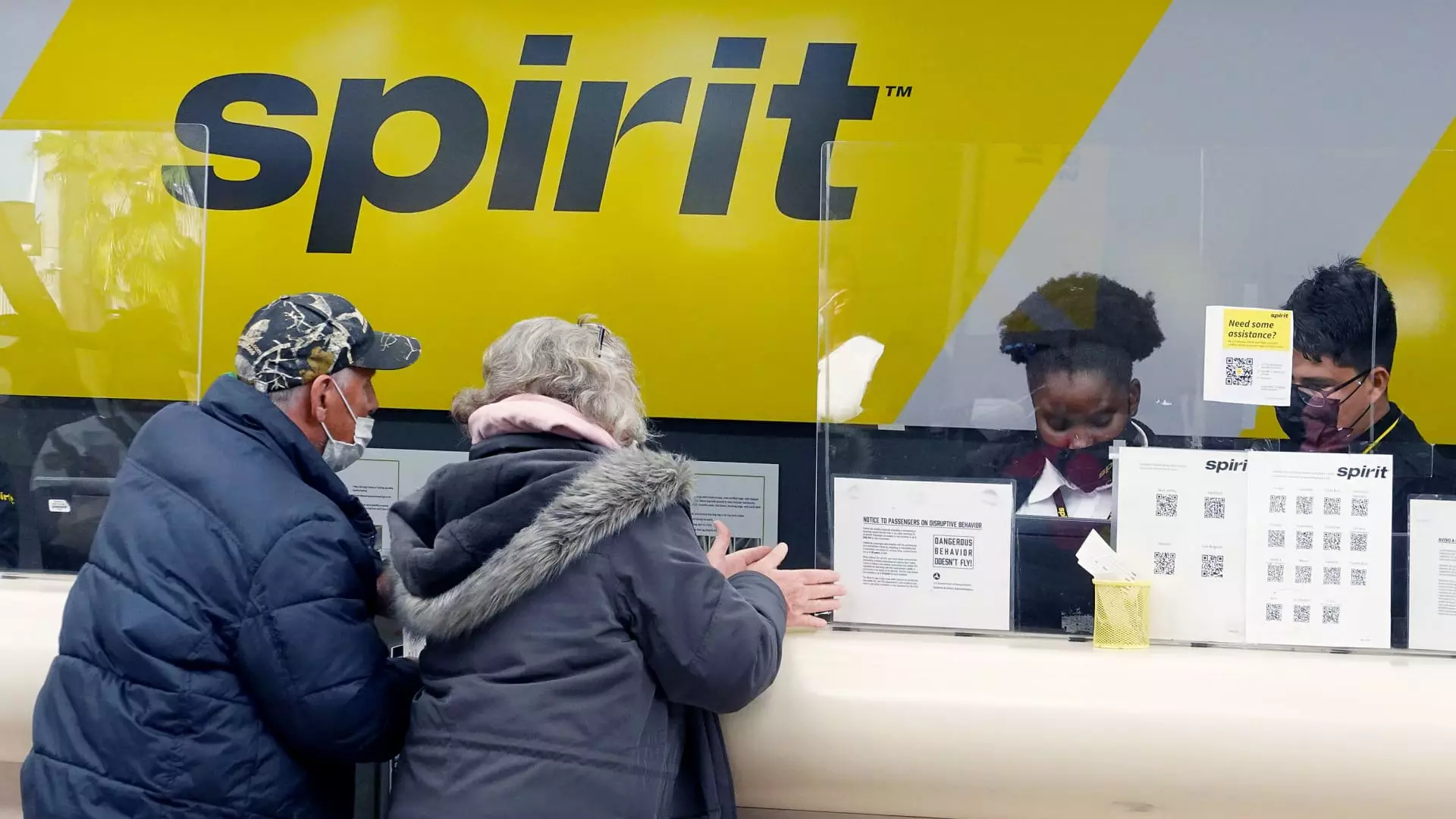Spirit Airlines has long been synonymous with budget air travel in the United States, transforming the industry landscape with its low-fare business model. However, the Dania Beach, Florida-based airline is now facing a significant upheaval as it files for Chapter 11 bankruptcy protection. The carrier’s recent move signals the culmination of years of financial struggles characterized by steep losses, an unfruitful merger attempt, and changing consumer preferences that have challenged its operational model. This article explores the factors that led to Spirit’s downfall, the implications for the airline and its customers, and the potential future of the brand.
The decision to file for bankruptcy protection comes after a tumultuous period for Spirit Airlines, which has seen its stock plummet by over 90% in 2023 alone. This decline can be attributed to several compounding issues, including an embarrassing engine recall that grounded many of its aircraft, rising operational costs post-pandemic, and the catastrophic failure of its merger with JetBlue Airways—a deal which was controversially blocked by a federal judge on antitrust grounds. Spirit’s financial woes have been exacerbated by disappointing quarterly earnings, with the carrier reporting a staggering loss of more than $335 million in the first half of the year.
The airline’s model of charging low base fares supplemented with various fees for additional services had been initially successful in attracting cost-conscious travelers. However, this bare-bones approach failed to withstand the pressures of rising costs and shifting market demands. Airlines across the board have seen cost increases, but Spirit’s budget-friendly reputation has suffered significantly as consumers increasingly seek value and quality in their travel experiences.
In its bankruptcy declaration, Spirit Airlines revealed that it had reached a prearranged financing agreement with bondholders, securing $300 million in debtor-in-possession funding to guide it through this challenging period. Critically, the airline assured customers and stakeholders that day-to-day operations would continue unaffected, emphasizing that passengers could confidently book flights during the bustling holiday season ahead. CEO Ted Christie communicated this message directly to customers, highlighting that all existing tickets, credits, and loyalty points would still be honored.
Despite the grim circumstances, Spirit captures a glimmer of hope through its pre-arranged restructuring plan designed to stabilize operations and alleviate its massive debts. Furthermore, the airline anticipates exiting bankruptcy by the first quarter of the following year, but this ambition may depend considerably on its ability to rein in costs and restructure effectively.
To bolster its financial footing, Spirit has begun divesting some of its assets. The sale of 23 Airbus aircraft for approximately $519 million exemplifies the airline’s strategy to quickly generate capital amid ongoing financial distress. Notably, this asset liquidation has proven advantageous given the current shortage of aircraft in the industry, allowing Spirit to exploit favorable market conditions.
Despite these maneuvers, the path to recovery remains steep, as analysts anticipate further cost-cutting measures during and after bankruptcy proceedings. The recent announcement of additional pilot furloughs, alongside previous route reductions, highlights the difficult decisions Spirit faces in an attempt to align its operations with a viable financial model.
In light of its financial struggles, Spirit Airlines has begun to recalibrate its business strategy. The airline, wary of the rising interest in more amenities and options, introduced bundled fares that include seat assignments and other perks aimed at attracting travelers willing to pay for enhanced services. This shift seems necessary for survival in a market increasingly dominated by travelers desiring basic comforts during their flights.
The competitive landscape is continuously evolving, as major airlines such as Delta, American, and United have also adopted basic economy fares, desperate to capture budget-conscious customers. Ironically, Spirit’s value-driven model has seeded similar strategies across the industry, demonstrating its undeniable influence on the aviation market, even as it struggles for survival.
With the cloud of bankruptcy looming overhead, questions remain about Spirit’s future trajectory. While past failed attempts to merge with JetBlue and Frontier left the airline in a precarious state, renewed discussions between Spirit and Frontier could indicate a potential path forward. Analysts speculate that negotiations may resume as both parties consider the possibility of forming a partnership that could bolster their competitive positions in the market.
The air travel landscape is changing rapidly, influenced by shifts in consumer preferences and economic factors. Spirit Airlines, once a paragon of budget travel, now faces the daunting task of redefining its business model to ensure long-term viability. By addressing its financial challenges head-on and recalibrating its offerings, Spirit may yet find a way to soar again, bringing much-needed stability not only to its operations but also to the loyal customers who have supported it over the years.

Leave a Reply